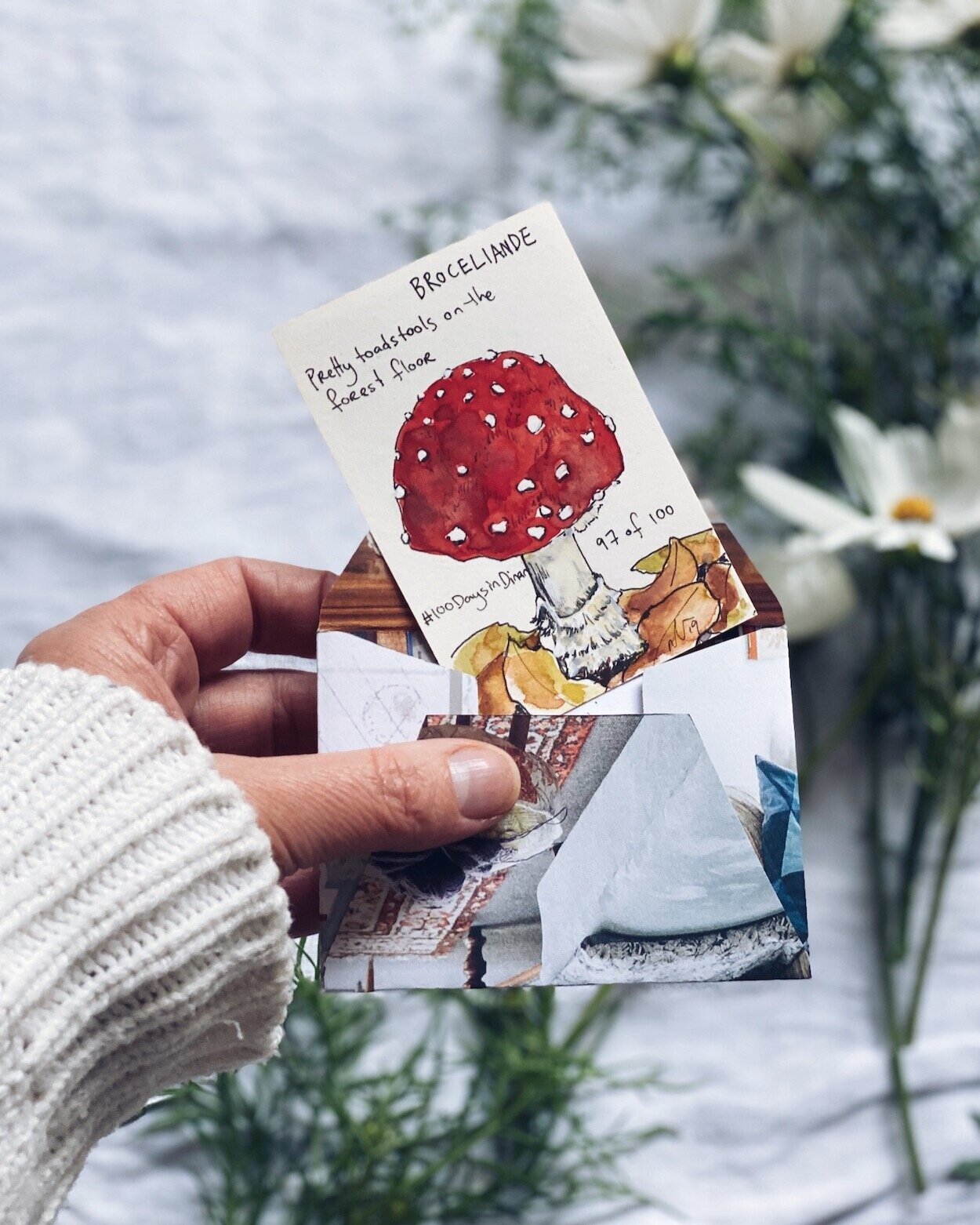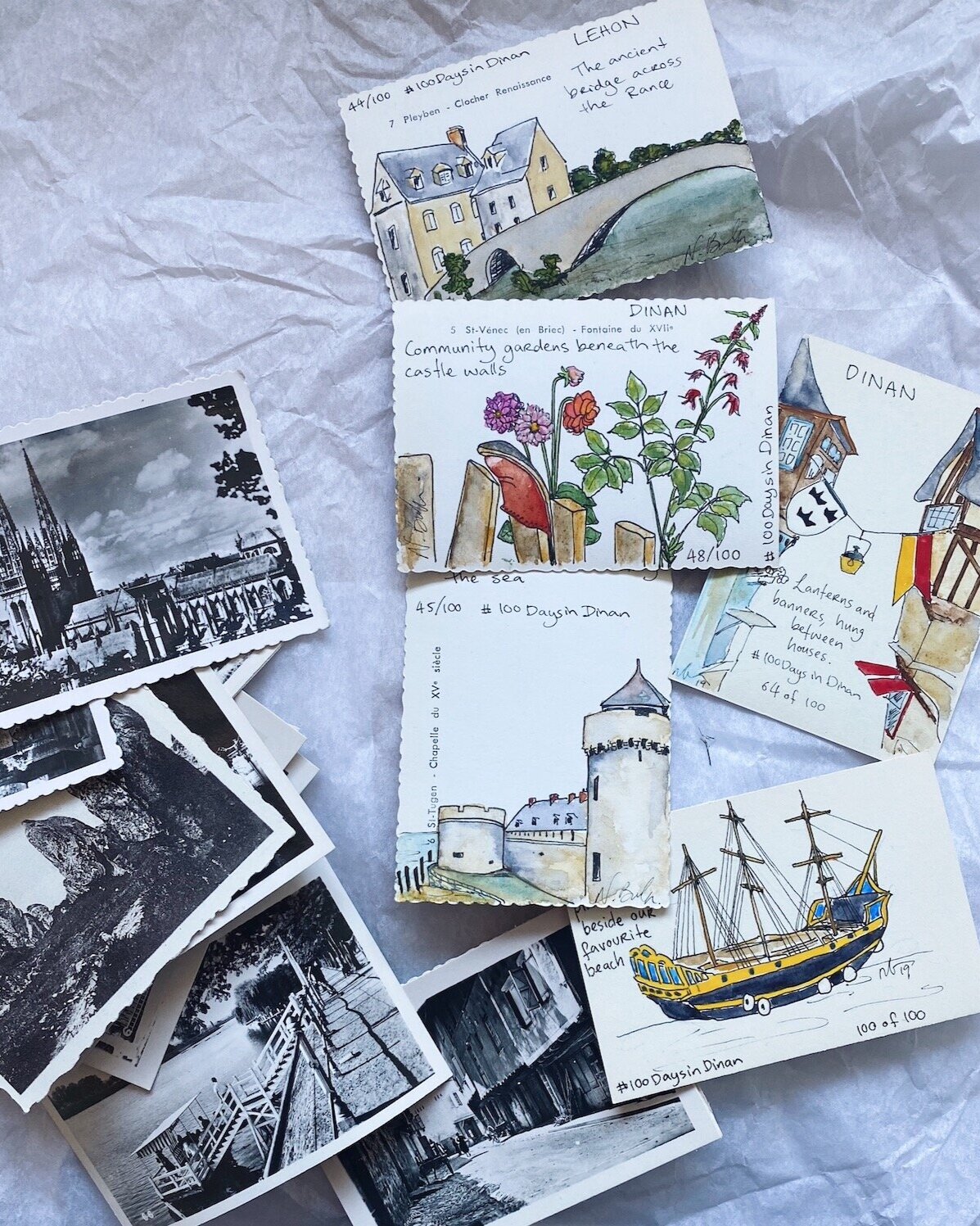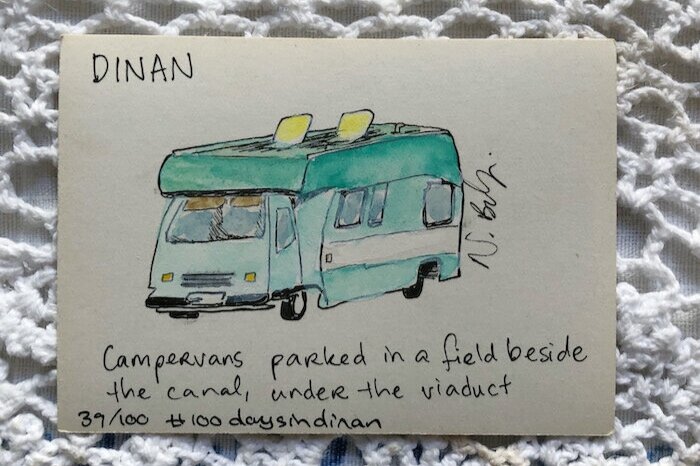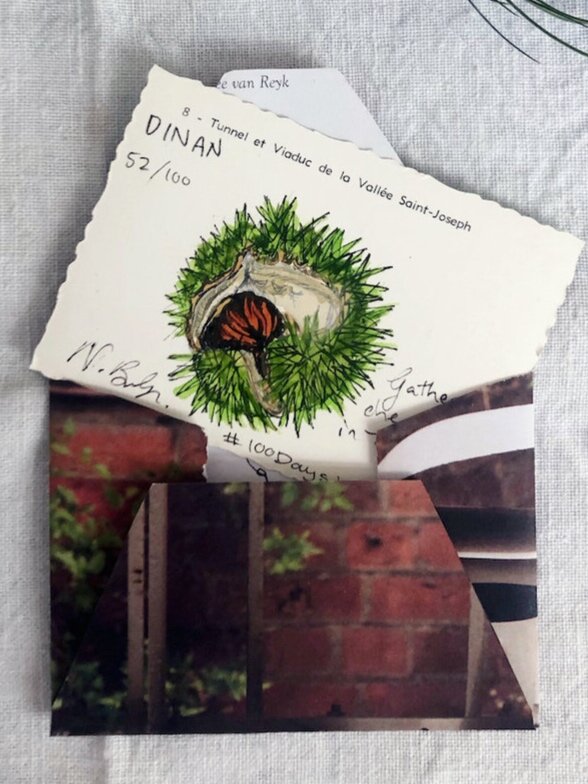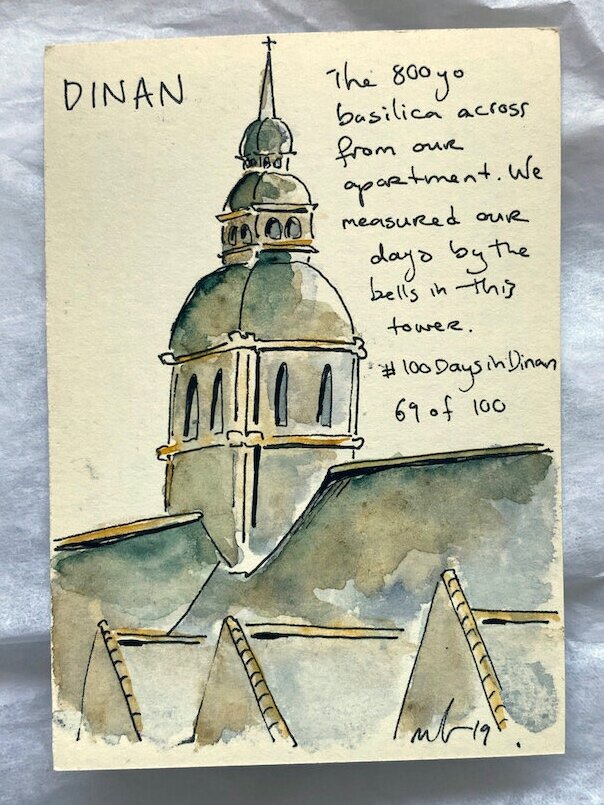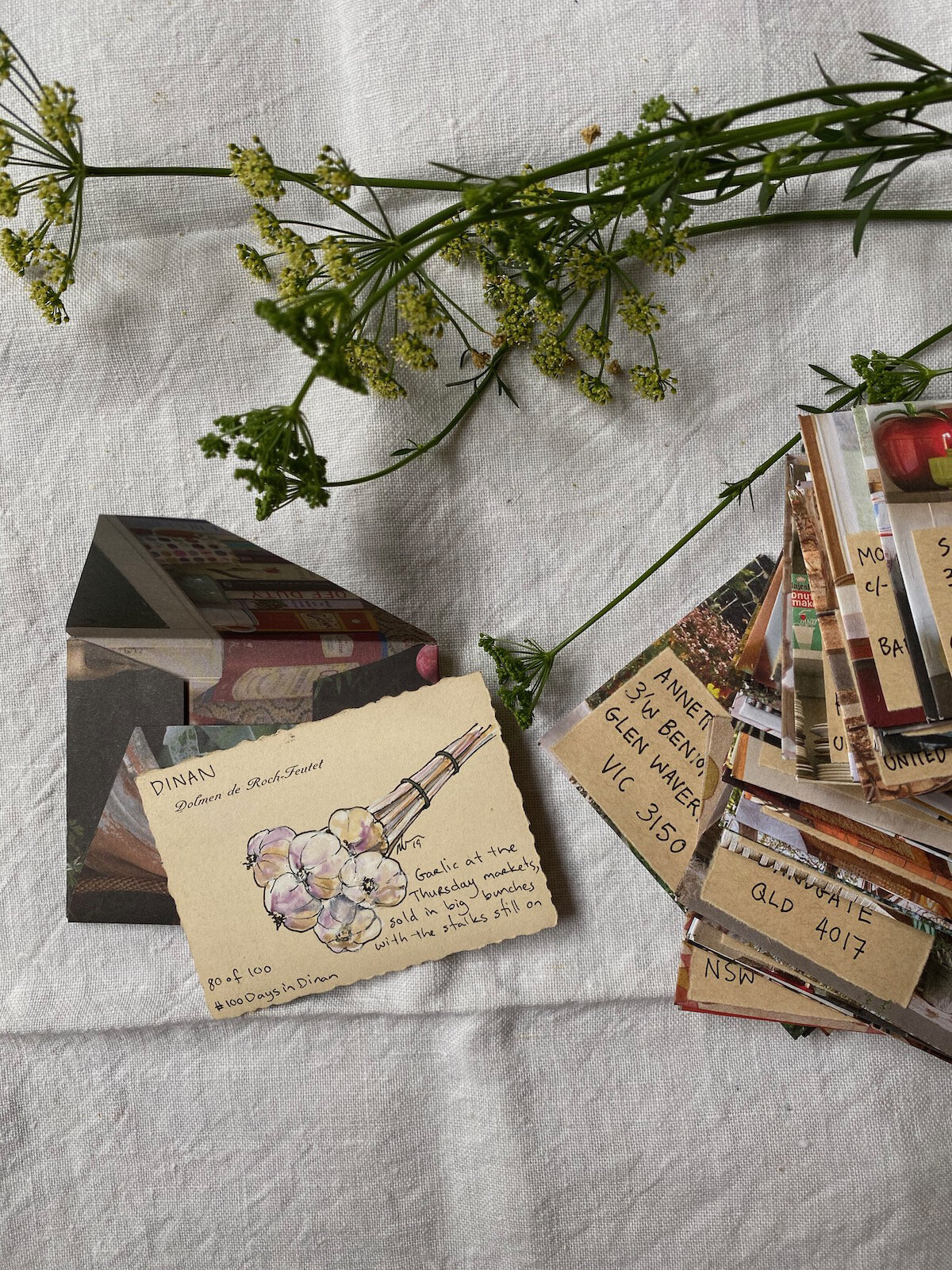A body of work
I called this project #100DaysInDinan. One hundred days can feel as fleeting as a week if you happen to be on sabbatical in a medieval French village with your two children. One hundred days pass in the blink of an eye as you watch those children grow (why are their pants too short again? weren’t they in nappies just yesterday?). Although I’m sure you’ll agree one hundred days can stretch out like a lifetime during lockdown.
When I set myself the challenge of illustrating and posting a miniature postcard every day for a hundred days, I hoped to celebrate the memories of our hundred days in France and make them last a little longer. I also wanted to see if I could establish some kind of creative habit that would last me beyond the project.
In the former, I was very successful. Each miniature illustration took me back to a place, a moment, or a conversation: tiny touchstones that helped to keep me connected with those halcyon days. But in the latter, I have to say I was an abject failure. I still wholeheartedly subscribe to the premise of “doing something creative for 20 minutes a day,” which is where I was going when I set myself this challenge. But the reality is that it took me a lot more than 20 minutes - sometimes several hours - to plan out, draw, paint, annotate and sign each postcard, then trace, cut out and paste together a mini envelope, then look up the next person’s address on my list of a hundred addresses and carefully write their address onto a tiny piece of paper and glue it to the envelope, then look up the postage cost online for the destination country and find the right stamps, then affix a wax seal to the back…
Frequently I struggle to find 20 minutes in my day so multiple hours was just too big an ask. That, and of course I’d have to pack away all my paints and papers every time anyone wanted to eat at the dining table (unreasonable family!), only to bring them all out and set up again the next time I wanted to paint. The reality then of my “one painting a day” project was that I’d knock out seven or eight in a weekend by doing nothing else, and then not get to the rest for another month or two. And so time passed.
I sent the last of the postcards to their new homes during Melbourne’s second lockdown, more than a year after I’d started my “100 days” project. The postal services being what they are at the moment, some of them are even taking 100 days or more to complete their journeys across the world. But I kind of like that. It’s fitting, in its own way, that a project that meant so much to me and was such an unexpectedly enormous labour of love would then take its own sweet time to complete the journey. After all, the postcards I was using were 100 years old or more: they had waited a century to be posted, there was no need to rush to the finish line.
And yet as I slipped the final 12 postcards into the red letterbox outside the post office, I did so with a distinct feeling of underwhelm. All that time. All that work! All those precious memories. All those oceans for my postcards to cross. And I was left with… nothing. Just the empty cardboard packets in which the postcards had been stored, locked away for a hundred years or more in somebody’s drawer.
It occurred to me too late that I had actually created for myself a “body of work.” But by posting them all away one by one, I hadn’t let the pleasant weight of creating that work actually settle.
I had been mindfully in the moment, painting each postcard one at a time, reliving the memory it evoked. But moments in life, while individually precious, are also cumulative, each of them drawing on those that came before and forming the scaffold for those that are yet come. (If you look at it this way, a life is a body of work. Or many bodies of work, to be more accurate.)
My miniature paintings were each part of a larger work, tiles in a mosaic, and while I wasn’t necessarily thinking about them in this way as I painted, the idea must have been there somewhere in my subconscious because instinctively I numbered each of them, solidifying their individual places within the one-hundred. They were never meant to exist on their own, and I learned that truth too late. If I had my time again I’d hold the postcards back, painting them all and then viewing them together to see what kinds of stories they told, before posting them back out into the world.
So now, for you but if I’m honest mostly for myself, I am going to retrospectively survey my body of work.
By pulling all 100 illustrated postcards together in this gigantic blog post, using iPhone photographs I snapped before posting (sometimes quite hastily), I have tried to piece together what this body of work might have been. Doing it this way has felt a little bit like an archaeological dig through my memories, once again painstakingly focusing on each individual item, not seeing the big picture until it is finally done, then standing up at last, stretching my back, and surveying the landscape uncovered.
Here it is, my body of work. A hundred days in the living, a year and a half in the making, and for these postcards, a century in the waiting. I wonder what stories it has to tell, when all the pieces are connected together like this? What does it say to me? Where does it take you?
If I learn the answer I’ll let you know.

